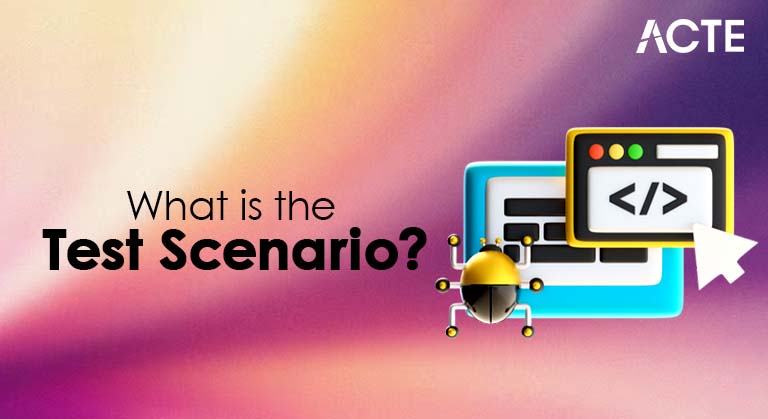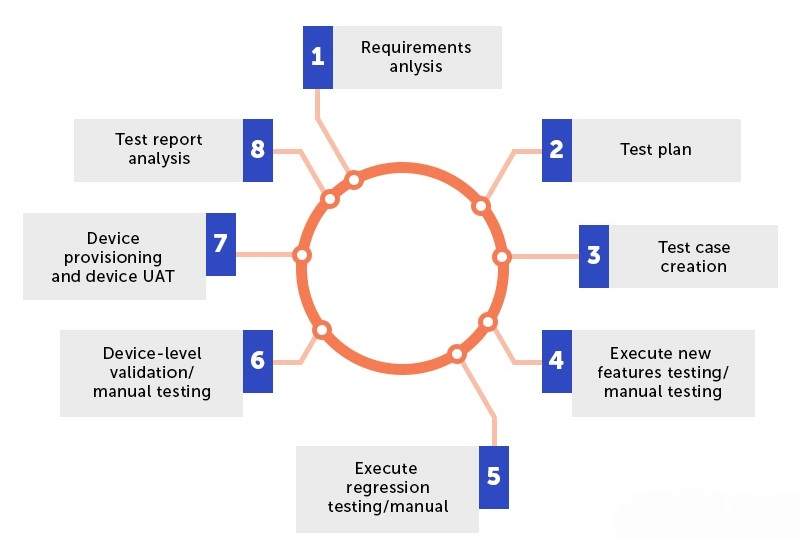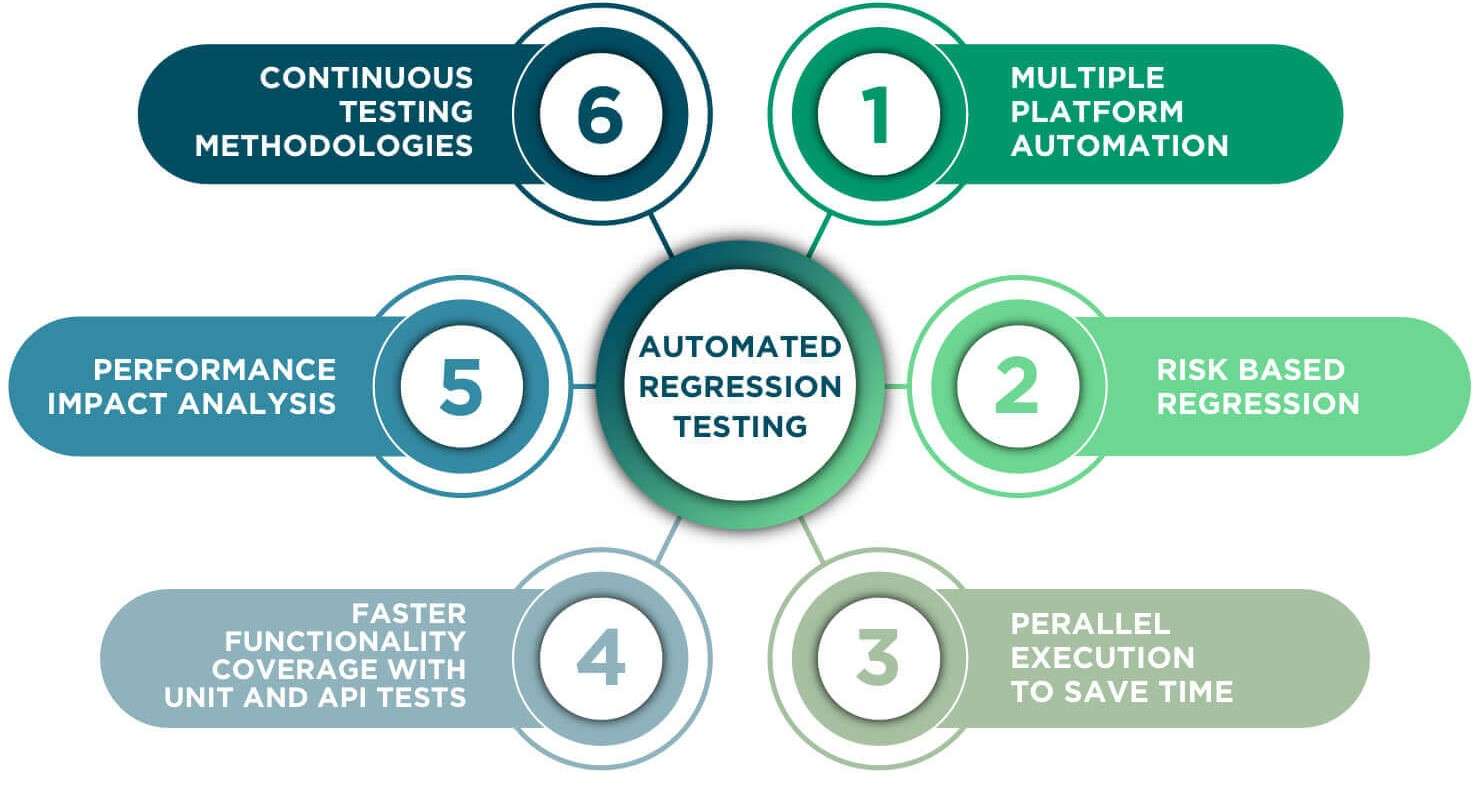
- Introduction to Test Scenario
- Definition of Test Scenario
- Importance of Test Scenarios in Software Testing
- Characteristics of a Good Test Scenario
- How to Write a Test Scenario
- Types of Test Scenarios
- Test Scenario vs Test Case
- Real-Time Examples of Test Scenarios
Introduction to Test Scenario
A Test Scenario is a high-level documentation of what needs to be tested, often written from the end-user’s perspective, and it serves as a foundation for preparing detailed test cases. It helps testers ensure that all functionalities of an application are verified without redundancy. In real-world testing practices, test scenarios are crucial for streamlining testing efforts across various domains. For instance, in Database Migration Testing Scenarios, testers focus on validating data integrity, completeness, and consistency when data is transferred between systems, ensuring nothing is lost or corrupted during migration. Similarly, Security testing scenarios for web application aim to uncover vulnerabilities by simulating unauthorized access, SQL injection, cross-site scripting, and more, protecting sensitive data and system access. Additionally, Performance testing scenarios for web applications are designed to evaluate system behavior under load, response time, scalability, and stability during peak usage. Each of these categories requires well-defined test scenarios to guide execution and ensure quality across different layers of the application. By creating precise and comprehensive test scenarios, QA teams enhance test coverage, reduce risk, and align testing objectives with business requirements. This approach not only improves product reliability but also shortens time-to-market by detecting issues early in the development cycle.
Are You Interested in Learning More About Software Testing? Sign Up For Our Software Testing Certification Training Today!
Definition of Test Scenario
- User-Centric Focus: Test scenarios are framed based on how an end user might interact with the system. For example, E Commerce test scenarios include tasks like user registration, browsing products, adding to cart, applying discount codes, and completing secure payment.
- High-Level Statements: A scenario represents a broad condition to test. For instance, Functional test scenarios may include user login, session timeout, or form validation, which form the backbone of system functionality and business workflows.
- Real-World Applications: Scenarios often reflect everyday environments, such as Chair test scenarios that assess stability, load endurance, and ergonomic design, or Elevator test scenarios that verify door operation, floor navigation, and emergency response protocols.
A Test Scenario is a high-level description of a functionality or process that needs to be validated in software testing. It outlines what to test without diving into the specific steps, allowing testers to evaluate a system’s behavior from a real-world user’s perspective. Test scenarios ensure full coverage of application flows and help teams focus on validating the most critical user journeys. These are particularly useful in complex projects, reducing redundancy and enhancing the clarity of test planning.
Here are 6 key points to understand the Definition of Test Scenario:

- Domain-Specific Coverage: In industry-focused testing, scenarios are tailored. For example, Database testing scenarios involve checking data migration, validation rules, data integrity, backup recovery, and transactional consistency to ensure a reliable backend.
- Efficient Test Planning: Well-defined test scenarios improve team productivity by organizing testing into logical units. They help prioritize based on risk and business impact, ensuring important functions are tested early and frequently.
- Foundation for Test Cases: Test scenarios act as the building blocks for more detailed test cases. One test scenario can spawn multiple cases, enabling a deeper exploration of both positive and negative workflows for complete test coverage.
Importance of Test Scenarios in Software Testing
The importance of test scenarios in software testing lies in their ability to provide a structured, high-level overview of what needs to be tested, ensuring comprehensive coverage of real-world use cases. Test scenarios help bridge the gap between business requirements and test execution by outlining clear testing objectives without diving into granular steps. They act as a guide for testers, reducing ambiguity and increasing efficiency across different types of testing. For instance, in Database Migration Testing Scenarios, test scenarios ensure that data transfer between old and new systems preserves accuracy, integrity, and completeness. Similarly, Security testing scenarios for web application focus on identifying vulnerabilities like unauthorized access, data breaches, and injection attacks, ensuring that the application is protected against potential threats. Meanwhile, Performance testing scenarios for web applications evaluate how the system behaves under stress, checking for responsiveness, scalability, and reliability during peak loads. Well-defined test scenarios enable better communication among stakeholders, minimize redundant test efforts, and support faster issue identification and resolution. They also play a vital role in regression testing and automation planning. Ultimately, incorporating structured test scenarios into the testing process enhances the overall quality, stability, and user satisfaction of the software product.
To Explore Software Testing in Depth, Check Out Our Comprehensive Software Testing Training Course To Gain Insights From Our Experts!
Characteristics of a Good Test Scenario
- Clear and Concise: A good test scenario is easy to understand, using simple language that clearly outlines what needs to be tested. For example, in Security testing scenarios for web application, clarity ensures that testers can identify vulnerabilities precisely.
- Aligned with Requirements: It must directly relate to business and functional requirements. In Database Migration Testing Scenarios, this ensures data consistency and integrity post-migration.
- High-Level Yet Detailed: While it doesn’t include step-by-step instructions, it should provide enough context for testers to derive comprehensive test cases, especially in Performance testing scenarios for web applications.
A good test scenario serves as a foundation for efficient and reliable software testing. It helps testers focus on real-world user interactions and ensures that all critical functionalities are validated. Well-crafted test scenarios simplify test case development, enhance coverage, and improve team collaboration. Whether applied to general testing or specialized areas like Database Migration Testing Scenarios, Security testing scenarios for web application, or Performance testing scenarios for web applications, certain characteristics define their effectiveness.

- Testable: The scenario must describe something that can be validated through manual or automated testing, ensuring objective pass/fail outcomes.
- Reusable: A good scenario can be reused across multiple test cycles or related features, saving time and resources.
- Traceable: It should be easy to trace a test scenario back to specific requirements or business goals, ensuring accountability and proper coverage.
How to Write a Test Scenario
Writing a test scenario involves understanding the application’s requirements and identifying real-world use cases that need to be validated. To create an effective test scenario, start by analyzing the functional specifications and user stories. Then, break down the application into key features and think from the end-user’s perspective. For example, E Commerce test scenarios might include actions like user login, searching for products, adding to the cart, and checking out. In Functional test scenarios, focus on verifying that specific features like form submissions, navigation, and calculations work as intended. Real-life physical testing can also benefit, such as in Chair test scenarios, where stability, weight capacity, and durability are assessed under various conditions. Similarly, Elevator test scenarios might include testing floor buttons, emergency stop features, and door timing for passenger safety. In database testing scenarios, ensure that data insertion, updates, deletion, and retrieval processes maintain integrity and reflect accurate results. Writing a good test scenario requires clarity, relevance to business needs, and alignment with test objectives. Avoid writing overly technical descriptions, use clear language and ensure each scenario is testable. This approach not only supports better test case creation but also enhances the efficiency and reliability of the overall testing process.
Types of Test Scenarios
Test scenarios can be categorized into various types based on the nature of the application and the goals of testing. Understanding these types helps ensure that all aspects of the software are thoroughly validated. Among the most common types are Functional Test Scenarios, which focus on verifying that each feature of the application behaves as expected according to requirements. Another key category includes Database Migration Testing Scenarios, which are used to ensure data integrity, consistency, and completeness when moving data from one database to another. These scenarios are crucial during system upgrades or platform changes. Additionally, Security testing scenarios for web application play a vital role in protecting the system against potential threats such as unauthorized access, SQL injection, and data leakage by validating the app’s resistance to vulnerabilities. Performance testing scenarios for web applications evaluate the speed, scalability, and responsiveness of the application under varying loads, ensuring a seamless user experience even during peak traffic. Other types include usability scenarios, compatibility scenarios, and integration scenarios, which help assess user interface quality, cross-platform functionality, and interaction between modules respectively. Using a combination of these test scenario types provides a robust testing strategy that enhances software quality, reliability, and end-user satisfaction.
Test Scenario vs Test Case
Test Scenario vs Test Case is a fundamental concept in software testing that highlights the difference between high-level test planning and detailed test execution. A test scenario is a broad description of a functionality or process to be tested, focusing on what to test, often from the end-user’s perspective. It helps ensure complete test coverage without diving into detailed steps. For instance, Chair test scenarios might involve checking durability or design comfort under real-world conditions, while E Commerce test scenarios could include placing an order or applying a discount code. In contrast, a test case is a specific set of actions, inputs, and expected results created to verify one aspect of the scenario. For example, within a Functional test scenario like login validation, individual test cases would test valid and invalid credentials. Similarly, Elevator test scenarios might describe general elevator operation, while test cases check specific elements like floor button response or door safety timing. Database testing scenarios focus on broad data operations like migration or integrity checks, while test cases would verify specific queries, triggers, or data accuracy. In short, test scenarios guide what to test, and test cases define how to test it, making both essential for a comprehensive QA strategy.
Want to Pursue a Software Testing Master’s Degree? Enroll For Software Testing Master Program Course Today!
Real-Time Examples of Test Scenarios
Real-time examples of test scenarios play a crucial role in demonstrating how testing aligns with real-world applications and business needs. These scenarios reflect practical situations that end users might encounter, helping testers validate critical functionalities. For example, in Database Migration Testing Scenarios, a real-time scenario could involve migrating customer data from an old CRM system to a new cloud-based platform, where testers verify data accuracy, completeness, and referential integrity post-migration. In Security testing scenarios for web application, a realistic scenario could be simulating a login attempt using SQL injection to test whether the application properly sanitizes inputs and prevents unauthorized access. Another common real-time example includes checking user role-based access, ensuring that users can only perform actions allowed by their permissions. For Performance testing scenarios for web applications, a real-time scenario may involve simulating thousands of users accessing a shopping site simultaneously during a festive sale, testing how the system handles peak traffic, server load, and response times. These examples help teams identify potential failures before they reach end-users, ensuring software reliability, security, and efficiency. Leveraging such real-time test scenarios in QA planning leads to a more robust, user-friendly, and scalable application in today’s dynamic software environment.

